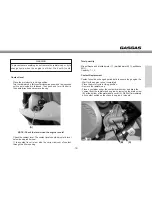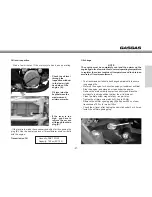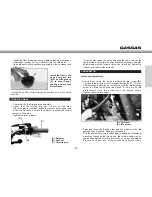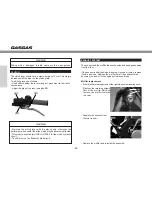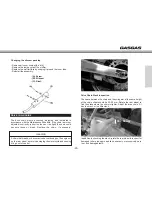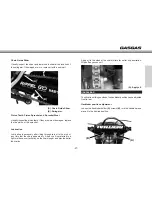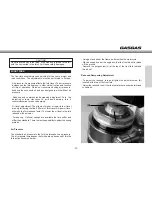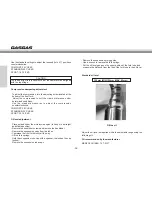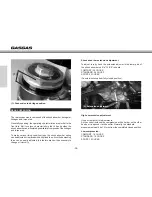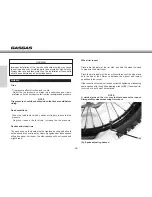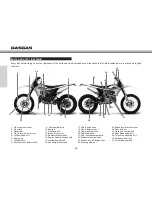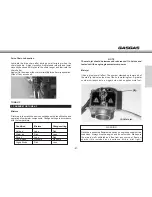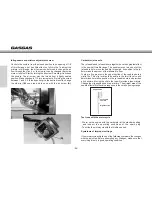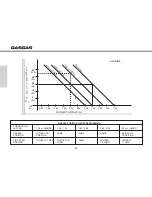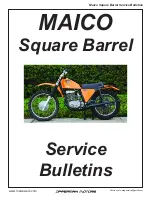
-
31
-
- Using a stand under the frame, and stabilize the motorcycle.
- Place a support under the engine so that the front wheel is raised
off the ground.
- Remove the purge screw (A) at the top of the front fork to bleed
the air out.
Rebound Dampening Adjustment
- To adjust the rebound, turn and tighten the adjuster screw (B)
located at the top of the front fork.
- Adjust the rebound to suit the rider’s preference under determined
conditions.
CAUTION
Never leave the key in the latch. If the steering is turned to the left
with the key inerted in the latch it will be severely damaged.
FRONT FORK
The front fork should always be adjusted for the rider´s weight and
road conditions. The adjustments must be performed in 4 steps:
- Air pressure: Air pressure affects the fork travel. The air pressure
increases as the fork heats up, in other words it varies as a function
of time of operation. We do not recommend using air pressure,
because the suspension has been designed to work without air
pressure.
- Rebound and compression dampening adjustment: Turn the
adjusting screws clockwise to increase damping, turn it
counterclockwise to reduce damping.
- Oil level adjustment: The effects of higher or lower fork oil level
are only felt during the final 100 mm of fork travel. A higher oil level
will make the fork rebound faster. The lower the oil level is the fork
rebound will be slower.
- Fork spring: Optional springs are available that are softer and
stiffer than standard. There is also the possibility to adjust the spring
preload.
Air Pressure
The standard air pressure in the fork is atmospheric air pressure.
The air pressure increases as the fork heats up, because of this the
fork action becomes harder.
(C)
(A)
(B)



